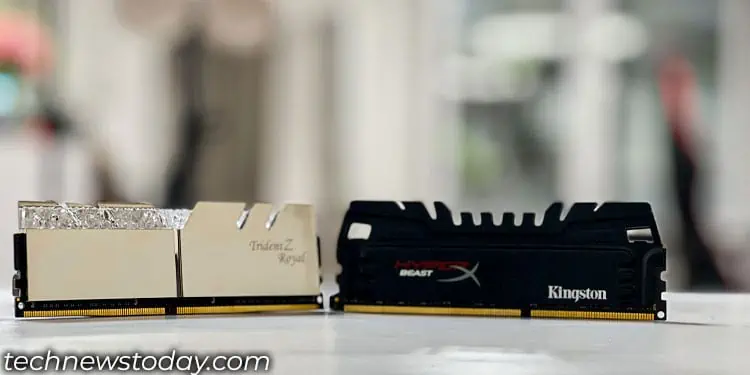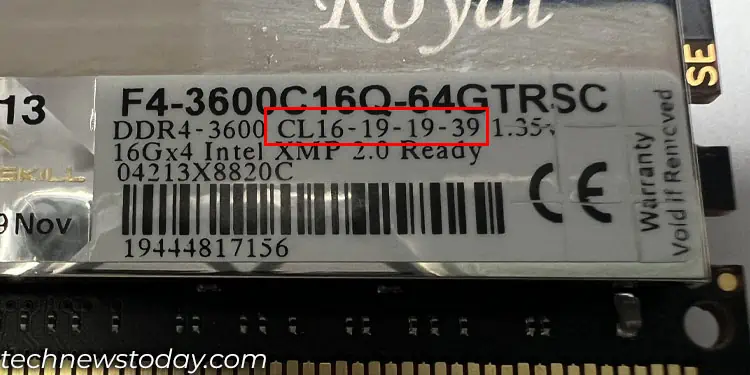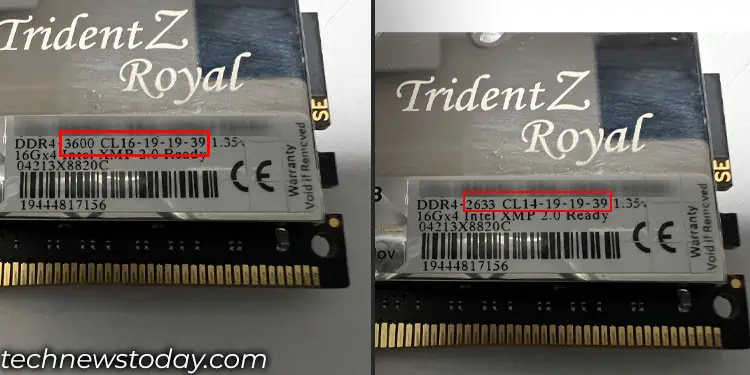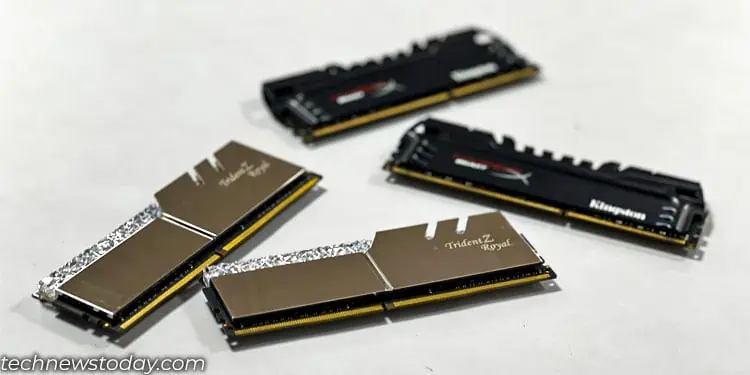The first thing you look at when buying a memory module is probably the capacity and memory frequency. But, one aspect most beginner or even intermediate PC enthusiasts overlook when getting RAM is its latency.
RAM latency is thedelay a memory module takes to respond to a CPU request. Ideally, you would want to choose a RAM with lower latency. But there are a few factors that need to be taken into consideration, as latency does not entirelyimprove a RAM’s performance.
So, let’s dive further into the topic,

Understanding RAM Latency
RAM latency is basically the delay it takes for the CPU to receive and process the data from RAM once the memory controller has requested it.
Two factors in particular affect RAM latency,RAM frequencyandCL or CAS Latency. Both these values are mentioned in your memory sticks.
In your memory module, you may have seen writing such as8GB DDR4 3600 CL 18. DDR4 is theDouble Data Rate Generation. 3600 is the transfer rate, which is 3600 MegaTransfers per second.

And finally, CL is the CAS Latency or Column Address Strobe Latency and is measured in a clock cycle. In the above example, the CAS latency of the memory module is18 clock cycles.
Here is the formula to calculate total RAM latency in seconds.
Here is a table representing how CAS latency affects memory latency.

This clearly makes the memory module with lower CAS Latency the winner, given that the RAM speed is the same.
If you are unsure about choosing between two memory modules, we recommend getting aRAM with higher frequencyand lower CL.
you may also utilize the formula mentioned above to calculate the RAM latency to find out the exact delay in nanoseconds. And choose one with the lower latency.

Besides theDDR version,RAM’s transfer speed, and CL, you might also have seen a sequence of numbers on the memory sticks, which looks something like 20-19-19-40.
Data on a RAM is saved on rows and columns. These number represents the number of clock cycle to access data from said rows and columns.